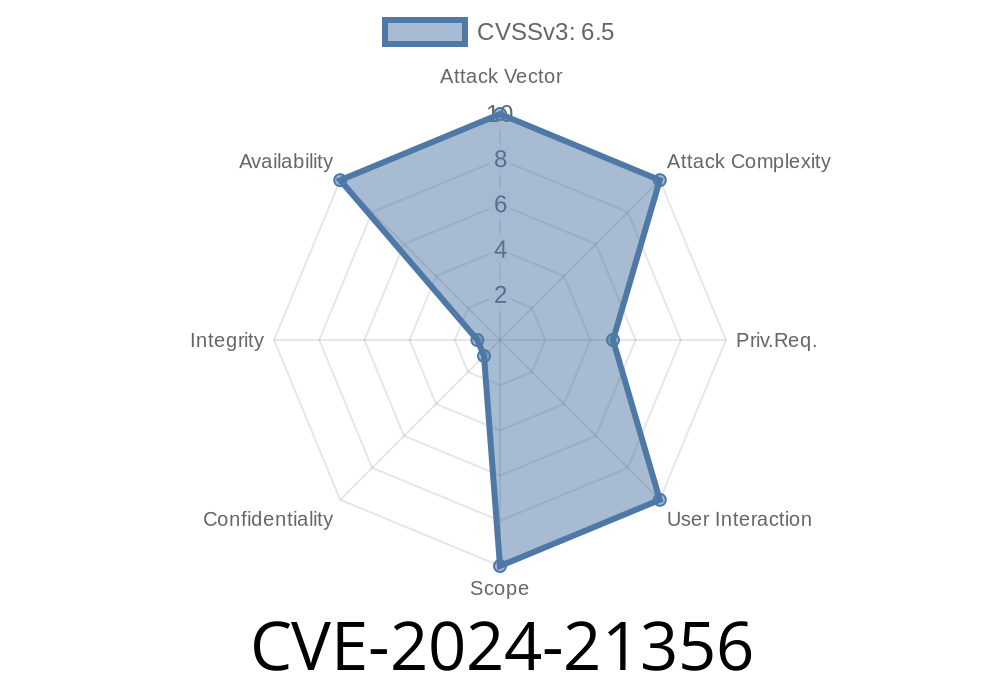Before diving into the specifics of CVE-2024-21356, a vulnerability that affects the Lightweight Directory Access Protocol (LDAP) in Windows systems, let's get acquainted with the basics of the LDAP and its significance.
LDAP is a widely used protocol for accessing and maintaining distributed directory information services over a network. In simpler terms, it helps manage user accounts, groups, and other data within the Windows ecosystem. With the increasing importance of LDAP in managing these resources, any vulnerability in this protocol poses a serious threat to the security and stability of the affected systems.
Now, let's turn our focus to the CVE-2024-21356 vulnerability, which enables attackers to cause a Denial of Service (DoS) on Windows systems that use LDAP. In this in-depth analysis, we will cover the details of this vulnerability, how it can be exploited, and what you, as a user or an administrator, can do to mitigate the risks associated with it.
Vulnerability Details (CVE-2024-21356)
CVE-2024-21356 specifically targets the Windows LDAP implementation, allowing attackers to perform a Denial of Service attack by sending specially crafted requests to the affected LDAP server. In effect, this prevents legitimate users and software from accessing the necessary resources and services, leading to a disruption in normal functioning.
The official CVE description and reference can be found here
Exploit Details
To exploit this vulnerability, attackers send malicious LDAP requests to the targeted server, causing it to stop responding. These crafted requests contain specific parameters and data structures that, when processed by the vulnerable server, result in excessive resource consumption and eventual service disruptions, creating a DoS scenario.
Here's an example code snippet showing a basic idea of how this malicious LDAP request might look like:
import ldap
def exploit(target_ip, target_port):
ldap_server = ldap.initialize(f'ldap://{target_ip}:{target_port}')
malicious_request = b'\x30\x00\x00\x00\x00' * 100
ldap_server.simple_bind_s(malicious_request)
This sample code creates an LDAP connection to the target server and sends a crafted request (malicious_request) containing null bytes. When repeated and amplified, this request leads to the susceptible Windows LDAP server being overwhelmed and subsequently rendered unresponsive.
Mitigation Strategies
In order to mitigate the risks associated with the CVE-2024-21356 vulnerability, the following steps are recommended:
1. Make sure your system is up-to-date: The first line of defense against these types of vulnerabilities is to keep all your software, including Windows and LDAP components, up-to-date. Regularly check for and install the latest patches and updates to ensure any known issues have been addressed.
2. Configure proper access controls: Limit access to your LDAP server, such as implementing IP whitelisting, restricting the number of connections, and setting up strong authentication requirements.
3. Monitor and analyze network traffic: Keep an eye on your network activity and look for any suspicious or unusual patterns of requests, particularly targeting your LDAP server. This includes monitoring logs to detect and identify possible attack patterns or attempts at exploiting the vulnerability.
4. Implement traffic filtering: Configure firewalls and Intrusion Detection Systems (IDS) to filter or block any suspicious or malformed LDAP requests that might indicate an attacker trying to exploit the vulnerability.
In conclusion, the CVE-2024-21356 vulnerability is a critical threat to Windows systems using the LDAP service. Users and administrators should take the steps outlined above to ensure their systems are protected from potential DoS attacks. By being proactive in implementing robust security measures, you can minimize the risks and impact of this and other vulnerabilities.
Timeline
Published on: 02/13/2024 18:15:52 UTC
Last modified on: 02/13/2024 18:22:58 UTC
